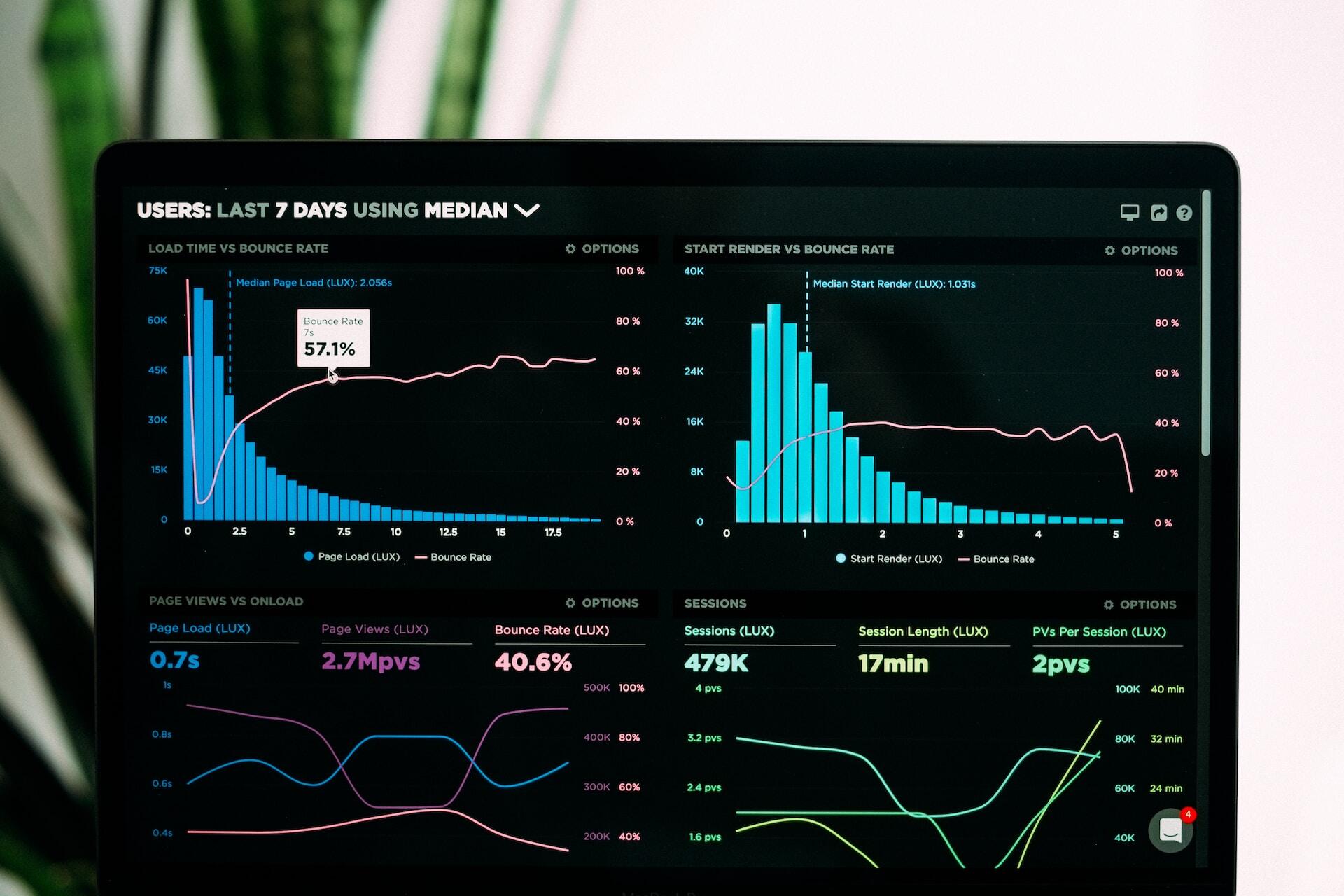Today, the mastery of data analysis techniques stands as a critical pillar for organizational success. Our exploration in "Unveiling the Power of Data" dives into the core realms of data analytics—descriptive, diagnostic, predictive, and prescriptive analyses. These methodologies, each unique in their approach and application, collectively provide a comprehensive toolkit for deciphering the vast and intricate world of data. Together, these methodologies transform raw data into invaluable insights, driving strategic decisions and innovative solutions.
The journey of data analysis

The term 'Big Data' encapsulates not just the volume of data but also its variety and velocity. With the emergence of big data, traditional data processing software became inadequate, leading to the development of new tools and technologies capable of handling large, complex datasets efficiently. Advanced analytics techniques, including machine learning and artificial intelligence, further augmented data analysis capabilities, enabling more precise predictions and deeper insights.
It enables businesses to understand market trends, customer preferences, and operational inefficiencies. Governments use data analysis for policy-making, urban planning, and public service optimization. In healthcare, it aids in diagnosis, treatment personalization, and epidemiological studies.
In business, the most significant impact of data analysis is its role in decision-making. By converting raw data into actionable insights, organizations can make informed decisions, predict market trends, optimize operations, and personalize customer experiences. This data-driven approach minimizes guesswork and maximizes the accuracy of strategic decisions.
But despite its advancements, data analysis is not without challenges. Issues like data privacy, data quality, and ethical use of data are increasingly becoming areas of concern. Furthermore, the rapid pace of technological change necessitates continuous learning and adaptation.
Descriptive Data Analysis Explained
Descriptive data analysis is the initial step in the data analysis process, focusing on summarizing and organizing data to make it understandable. It provides a snapshot of past data and events, presenting them in a meaningful way. The primary purpose of descriptive analysis is to transform raw data into a form that can be easily understood, revealing patterns, trends, and insights from historical data. It answers the fundamental question of "what happened" in a given dataset.
Key Techniques and Tools:
- Data Summarization: This involves reducing a large set of data to smaller, more understandable segments. Techniques such as calculating mean, median, mode, and range are commonly used to summarize key characteristics of the data.
- Visualization Techniques: Data visualization is a critical aspect of descriptive analysis. Tools like charts (bar, pie, line), graphs, and heat maps help in illustrating data trends and patterns in a visually appealing and easily digestible format.
- Statistical Analysis: Basic statistical techniques are employed to describe and understand data. This includes measures of central tendency, measures of variability, frequency distributions, and correlation analysis.
Case Studies and Examples:
- Retail Industry: A retail chain uses descriptive analysis to understand sales patterns. By analyzing past sales data, they identify peak shopping hours, popular products, and seasonal trends. This information helps in inventory management and marketing strategies.
- Healthcare Sector: Hospitals employ descriptive analysis to track patient admissions over time. By examining data on the number of admissions, types of illnesses, and patient demographics, they can allocate resources more efficiently and improve patient care.
- Financial Services: Banks use descriptive analysis for understanding customer transaction patterns. Analysis of data like withdrawal amounts, transaction times, and frequency aids in detecting unusual patterns that could indicate fraudulent activities.
- Education: Educational institutions apply descriptive analysis to assess student performance. By analyzing grades, attendance, and other academic indicators, educators can identify areas where students excel or need improvement, shaping teaching strategies accordingly.
- Marketing: In marketing, descriptive analysis is used to understand customer demographics and buying behaviors. Analyzing data from customer surveys and sales records helps in tailoring marketing campaigns to target audiences more effectively.
In each of these examples, descriptive data analysis provides a foundational understanding of historical data, allowing organizations to make informed decisions based on past trends and patterns.
Diagnostic Data Analysis Explained

Diagnostic data analysis delves deeper than its descriptive counterpart, aiming to unearth the reasons and causes behind observed phenomena and trends. While descriptive analysis answers "what happened," diagnostic analysis tackles the "why did it happen" aspect. This form of analysis is investigative, focusing on identifying relationships and patterns that explain the underlying reasons or triggers for observed outcomes or trends in data.
Difference from Descriptive Analysis:
- Descriptive Analysis: Focuses on summarizing and understanding characteristics of historical data.
- Diagnostic Analysis: Goes beyond summarization to explore the causes and reasons behind the data patterns.
Techniques and Methodologies:
- Root Cause Analysis (RCA): A systematic approach used to identify the fundamental causes of issues or problems. RCA involves breaking down an issue to its core components to understand why it occurred.
- Data Drilling: This involves exploring data at a more granular level. By drilling down into subsets of data, analysts can uncover patterns and relationships that are not apparent at a higher level.
- Correlation Analysis: This technique examines the relationships between different variables in a dataset to determine if and how they are related. Correlation analysis helps in understanding whether changes in one variable might influence another.
- Statistical Control and Hypothesis Testing: These methods are used to determine whether the patterns observed in the data are statistically significant and not due to random chance.
Practical Applications:
- Manufacturing Industry: In a scenario where a manufacturing company faces an unexpected drop in product quality, diagnostic analysis can be employed. Using RCA, the company can trace back the production process to identify stages where quality issues arise, like a malfunctioning machine or a flawed raw material batch.
- E-Commerce Sector: For an e-commerce platform experiencing a sudden decrease in customer retention, diagnostic analysis can help pinpoint the cause. By examining website traffic data, customer feedback, and purchase history, the company might find that the issue stems from user experience problems like slow website loading times or a complicated checkout process.
- Healthcare: Hospitals might use diagnostic analysis to understand the causes of increased patient readmissions. By analyzing patient records, treatment methods, and post-discharge follow-up procedures, they can identify factors contributing to readmissions, such as inadequate follow-up care or premature discharge.
- Finance and Banking: Banks use diagnostic analysis to understand the reasons behind loan defaults. By examining the correlation between loan default rates and variables like credit scores, employment status, and economic trends, banks can identify high-risk factors and improve their lending practices.
- Energy Sector: An energy company might use diagnostic analysis to investigate the causes of a spike in energy consumption. By analyzing consumption data, weather patterns, and customer behavior, they can identify whether the spike is due to seasonal changes, increased customer base, or inefficiencies in the energy distribution system.
In each of these cases, diagnostic data analysis provides crucial insights into the causes behind observed data trends, enabling organizations to address issues effectively and make informed strategic decisions.
Predictive Data Analysis Explained
Predictive data analysis stands at the forefront of forward-looking analytics. It employs statistical techniques and models to analyze current and historical data, with the aim of making informed predictions about future events. Unlike descriptive and diagnostic analyses that focus on the past and present, predictive analysis is all about the future, answering the question, "What is likely to happen?" This approach is essential for organizations seeking to anticipate trends, prepare for upcoming challenges, and capitalize on potential opportunities.
Significance in Forecasting:
Predictive analysis is crucial in forecasting trends and behaviors, allowing businesses and organizations to make proactive decisions. It helps in risk assessment, demand forecasting, and identifying potential market changes, thus enabling better strategic planning and operational efficiency.
Techniques and Models:
- Regression Analysis: One of the most common techniques in predictive analysis, regression analysis examines the relationship between variables to forecast future outcomes. Linear and logistic regressions are widely used for prediction purposes.
- Machine Learning Algorithms: Advanced predictive models often employ machine learning algorithms. These include decision trees, random forests, and neural networks, which can learn from and make predictions based on data.
- Time Series Analysis: This method involves analyzing data points collected or recorded at regular time intervals. Time series analysis is particularly useful for forecasting in finance and economics, where data is inherently time-dependent.
- Data Mining Techniques: Data mining encompasses a variety of techniques to discover patterns in large datasets. These techniques, often used in predictive analytics, include clustering, classification, and association rule mining.
Industry Use-Cases:
- Finance: In the financial sector, predictive analysis is used for credit scoring, risk management, and stock market predictions. Financial institutions use these techniques to assess the creditworthiness of borrowers and to forecast market trends.
- Healthcare: The healthcare industry utilizes predictive analysis for patient care and management. Predictive models can forecast patient outcomes, readmission risks, and the spread of infectious diseases. This helps in resource allocation, treatment optimization, and preventive healthcare planning.
- Marketing and Sales: Predictive analysis in marketing enables businesses to understand customer behavior, forecast sales, and tailor marketing strategies. Techniques like customer segmentation and predictive lead scoring help in maximizing marketing effectiveness and enhancing customer engagement.
- Retail: Retail businesses use predictive analysis for inventory management, demand forecasting, and optimizing product placement. By predicting consumer buying patterns, retailers can ensure product availability and improve customer satisfaction.
- Manufacturing: In manufacturing, predictive maintenance is a key application. By predicting equipment failures and maintenance needs, manufacturers can reduce downtime and increase operational efficiency.
Predictive data analysis, with its focus on the future, plays a pivotal role in various industries, empowering organizations to make data-driven decisions and stay ahead in their respective fields.
Predictive Data Analysis Explained
Prescriptive data analysis represents the cutting edge of data-driven decision-making. While predictive analysis forecasts what might happen, prescriptive analysis goes a step further by suggesting actions to achieve desired outcomes. It combines insights from descriptive, diagnostic, and predictive analyses to recommend specific courses of action. Prescriptive analysis not only anticipates future scenarios but also evaluates possible decisions, guiding organizations toward optimal solutions.
Potential in Decision-Making:
This form of analysis is crucial for strategic decision-making as it provides actionable recommendations based on data. It helps in answering the critical question, "What should be done?" By considering various scenarios and their potential impacts, prescriptive analysis enables businesses to make informed, data-backed decisions that align with their objectives and constraints.
Tools and Strategies:
- Simulation Techniques: These are used to model complex systems and assess the outcomes of different decisions under various scenarios. Simulation helps in understanding the implications of each decision before implementation.
- Optimization Algorithms: Optimization is a core component of prescriptive analysis. It involves finding the best solution from a set of available alternatives, often using mathematical models. This is particularly useful in logistics, supply chain management, and resource allocation.
- Recommendation Systems: Widely used in e-commerce and content platforms, recommendation systems analyze user data to suggest products, services, or content. These systems enhance user experience and increase engagement by personalizing offerings based on user preferences and behaviors.
- Decision Analysis Tools: These tools incorporate risk assessment and cost-benefit analysis to evaluate the impacts of different decisions. They help in prioritizing actions based on their potential outcomes.
Future Implications:
- Integration with AI and Machine Learning: The future of prescriptive analysis lies in its integration with AI and machine learning. This will enable more sophisticated and automated decision-making processes, where systems can learn and adapt to new data, improving recommendations over time.
- Wider Industry Adoption: While currently used primarily in high-stakes fields like finance and healthcare, the future will see a broader adoption of prescriptive analysis across various industries. This will revolutionize areas like customer service, product development, and environmental management.
- Ethical and Responsible Use: As prescriptive analytics becomes more powerful, its ethical and responsible use will become increasingly important. There will be a need for guidelines and frameworks to ensure that decisions recommended by these systems are fair, unbiased, and in the best interest of all stakeholders.
- Real-Time Decision Making: Advancements in technology will enable real-time prescriptive analytics, allowing businesses to react and adapt quickly to changing circumstances. This will be particularly transformative in dynamic environments like financial markets and emergency response operations.
Prescriptive data analysis, with its advanced tools and strategies, holds the potential to significantly revolutionize decision-making processes across industries. By offering targeted recommendations and facilitating smarter, data-driven decisions, it represents the pinnacle of what can be achieved through the analytical use of data.
Integrating the Four Types of Analysis

Creating a cohesive strategy that integrates all four types of analysis is key to achieving comprehensive insights.
- Sequential Integration: Implement a sequential approach where each type of analysis informs the next. For instance, use descriptive and diagnostic findings to develop predictive models, which in turn feed into prescriptive strategies.
- Data Infrastructure and Tools: Invest in a robust data infrastructure and analytical tools that support all four types of analysis. This includes data storage solutions, analytics platforms, and visualization tools.
- Cross-functional Teams: Foster collaboration among different departments and teams, ensuring that insights from each type of analysis are shared and utilized across the organization.
Challenges and Considerations:
Implementing an integrated data analysis approach comes with its set of challenges.
- Data Quality and Integrity: Ensuring high-quality and accurate data is fundamental. Poor data quality can lead to incorrect conclusions and misguided decisions.
- Skills and Expertise: The complexity of integrating all four analyses requires a team with diverse skills, including data science, statistics, business intelligence, and domain-specific knowledge.
- Data Integration and Management: Managing and integrating data from various sources can be challenging, requiring effective data governance and management strategies.
Ethical and Legal Considerations:
Ethical and legal considerations are paramount in data analysis.
- Data Privacy and Security: Adherence to data privacy laws, like GDPR, is crucial. Ensure that data analysis practices comply with legal standards and respect user privacy.
- Ethical Use of Data: Establish guidelines for the ethical use of data. This includes transparency in how data is collected, analyzed, and used, and ensuring that data analysis does not lead to biased or unfair outcomes.
- Informed Consent: Where applicable, obtain informed consent from individuals whose data is being analyzed, clearly communicating how their data will be used.
- Ongoing Compliance and Training: Regularly update policies to comply with evolving data privacy laws and conduct training sessions for staff to stay informed about ethical and legal standards in data analysis.
Integrating these four types of data analysis into a cohesive strategy enables organizations to leverage their data assets fully. However, it's essential to navigate the challenges and adhere to ethical and legal standards to ensure that data analysis is not only effective but also responsible and compliant.
Navigating the Future of Data Analysis: AI-Driven Analytics and Emerging Technologies
As we conclude our exploration of the four pillars of data analysis—descriptive, diagnostic, predictive, and prescriptive—it's evident that the field is undergoing a dynamic transformation. The integration of these analysis types forms a comprehensive framework that empowers organizations to make informed decisions based on a holistic understanding of their data. However, the landscape of data analysis does not stand still; it is continuously evolving, propelled by advancements in technology and the growing complexity of data itself.
As we step into this future, the key will be to embrace these emerging trends, continuously adapt to new technologies, and uphold ethical standards in data usage. Organizations that successfully integrate these advanced analytical capabilities into their decision-making processes will be well-positioned to lead in their respective industries.
As data continues to be a pivotal asset, the way we analyze, interpret, and use this data will be critical in shaping the success of businesses and the advancement of industries globally.
Need help getting your data organized?
Talk to us!




